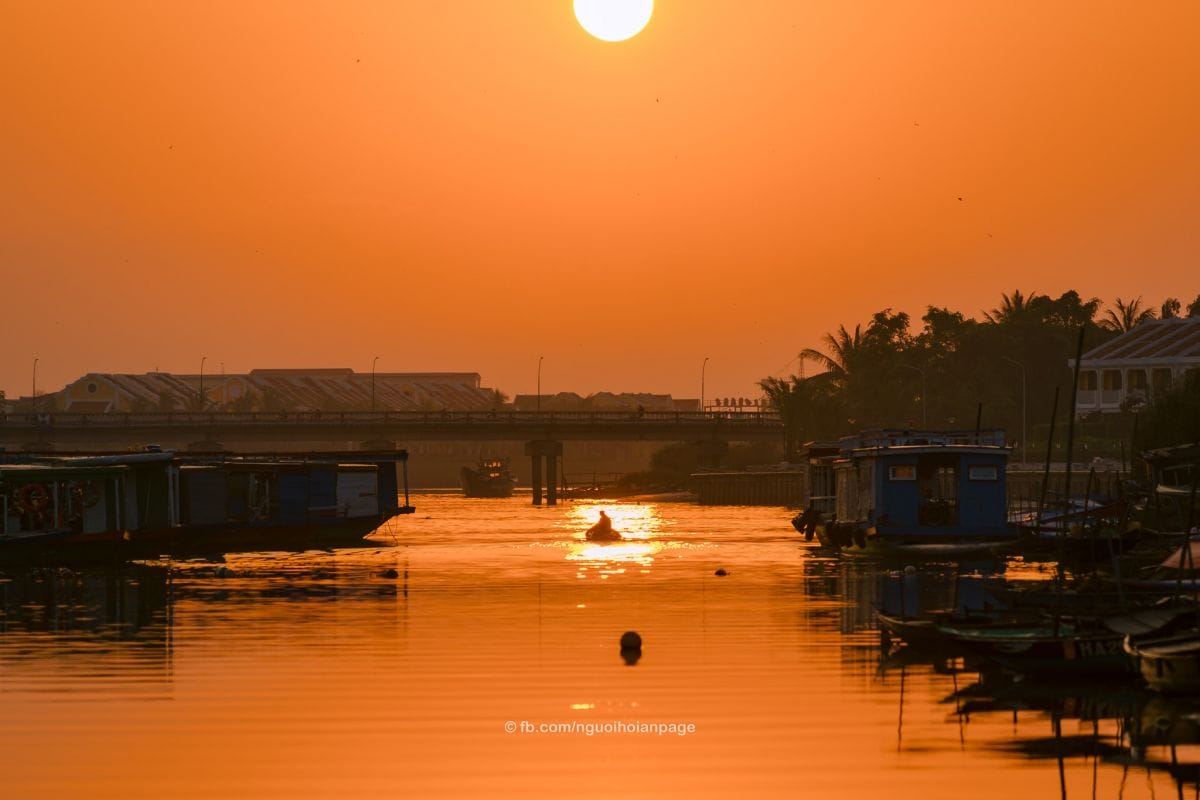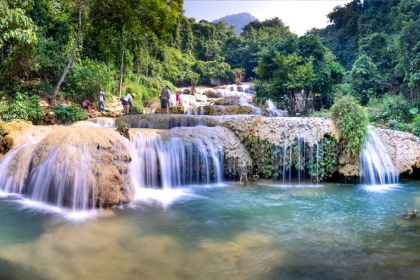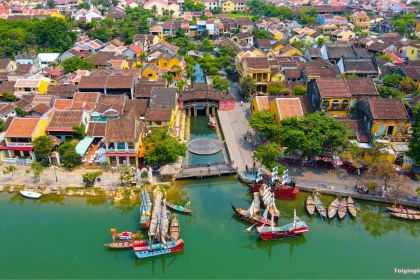Hoi An, Vietnam Free Travel Guide for 2023: Transportation, Accommodation, Attractions and Food Guide!
In recent years, Vietnam has become an increasingly popular tourist destination with its unique culture, food and low prices. Its strong Southeast Asian cultural atmosphere has deeply attracted tourists from all over the world. If you want to experience the unique Southeast Asian culture and local customs, then Hoi An Ancient Town in Vietnam is a very good choice. Here, the editor has compiled a free travel package for Hoi An, which includes all Hoi An transportation, accommodation, attractions and Let’s take a look at food information!
.jpg)
Hoi An Climate
The climate in Hoi An, Vietnam, belongs to the tropical monsoon climate, which is mainly divided into two seasons: wet season and dry season. The wet season usually runs from September to January, and the dry season from February to August. During the wet season, Hoi An often rains and the weather is humid and hot, with temperatures ranging from about 25°C to 30°C. Due to the influence of typhoons, the climate during the wet season can be very unstable, with constant rain and sometimes flooding, affecting your itinerary. On the contrary, in the dry season, the weather is sunny and dry, and the temperature is about 20°C to 25°C. This is a very suitable season for traveling because the climate is stable and suitable for various outdoor activities, so the dry season from February to May is the best time to visit towns~

Transportation in Hoi An
1. How to get to Hoi An
Usually Hong Kong people will go to Da Nang and Hoi An together, and the closest airport to Hoi An is Da Nang International Airport, which is also the most popular airport for Hoi An. The distance from Da Nang International Airport to Hoi An is 41 kilometers, and the drive takes about an hour. Since there is no railway, most people go there by car. You can try shared buses or taxis, but if you are not familiar with the place, if you want to be safer and more comfortable, I recommend chartering a car~
2. Hoi An city transportation
Hoi An The ancient city is not big and consists mainly of several main streets. It only takes a short distance to get from the street to the end of the street. If you really need transportation, cycling is also a good choice to quickly travel to scenic spots and delicious restaurants! Most hotels in Hoi An provide free bicycles, and there are many bicycle rental shops in the city, so you don’t have to worry about parking, which is very convenient.
The main activity area of Hoi An is in the ancient town, so there are different hotel options near the ancient town. If you want to be more leisurely, you can choose An Bang Beach and Cua Dai Beach further north. Hotels and resorts, each area has its own characteristics, let the editor introduce it to you!
Hoi An Food
How can you not come to Hoi An and not try their authentic food! As an ancient cultural capital, Hoi An’s food culture is also very diverse, integrating cultures from many countries. The first thing I recommend is Com Ga Ba Buoi chicken rice in Hoi An!
1. Com Ga Ba Buoi Chicken Rice
Com Ga Ba Buoi is a traditional Vietnamese chicken rice dish. It is an integral part of Vietnamese food culture. This food is very common in street vendors and restaurants in Vietnam. Com Ga Ba Buoi usually puts lettuce on the bottom of the cooked rice, then tops it with fried chicken and scallion oil. It is usually served with Vietnamese lettuce and green papaya salad. Overall, it is a relatively refreshing dish. , and there is no complicated seasoning. The chicken only uses salt and black pepper, so the taste is closer to simplicity and originality.
.jpg)
2. Cao Lau
Cao Lau is a traditional dish originating from Hoi An, Vietnam. The pork slices are braised with chewy dry noodles, soy sauce, spices, etc., and the inside is filled with fish sauce and braised gravy, which is full of Vietnamese style. Add in chili, nine-story pagoda and refreshing bean sprouts, and it becomes a unique "Hoi An" delicacy. The Gao Lou Noodles are served with fried pork rinds and pork slices, Gao Lou noodles and lettuce. Every bite is crispy and crunchy. It is paired with spicy and sour sauce. It is very refreshing and delicious. The cooking method is a bit like lo mein. It is also a fusion of different cultures in Hoi An. Its unique taste and flavor are well worth a try.
.jpg)
3. Bánh mì Việt Nam Bánh
mì is a unique Vietnamese snack that combines the culture and cuisine of France and Vietnam. Vietnamese French Bao consists of a French baguette and a variety of different local fillings, including mayonnaise and Maggi Sauce, Vietnamese ham and pickled radish shreds, as well as cilantro, Mexican pepper and other ingredients. Sweet and sour, with rich texture. This snack is popular in Vietnam and other Southeast Asian countries and has become the most representative Southeast Asian food.
.jpg)
4. Cà phê đá Vietnamese Coffee
When you come to the ancient town, you must try Vietnamese coffee and enjoy the slow time of the ancient town. Vietnamese coffee is different from the coffee we usually drink. Vietnamese coffee is drip coffee, but most of it uses Robusta coffee beans that are heavily roasted and have a strong bitter taste. Then add condensed milk, add ice cubes and stir evenly. Therefore, Vietnamese coffee tastes stronger than other coffees and requires more sugar for flavoring. There is also historical significance behind Vietnamese coffee, so Vietnamese coffee has been passed down to this day and has become an indispensable part of Vietnamese culture.
.jpg)
Hoi An Attractions
1. Hoi An Ancient Town
.jpg)
Hoi An Ancient Town is an ancient town in Hoi An with a long history and cultural heritage, and is also one of the most popular tourist attractions in Vietnam. This ancient city is a fusion of Vietnamese northern and southern cultures, leaving behind a rich historical heritage and diverse cultural characteristics. Hoi An Ancient Town was built in the mid-15th century and is an ancient port city. During the 17th and 18th centuries, Hoi An was one of the most prosperous trading centers in Southeast Asia, attracting merchants from China, Japan, the Netherlands and India. This period left behind a large amount of cultural and architectural heritage, such as temples, bazaars, commercial buildings and private residences. Hoi An Ancient Town is famous for its well-preserved ancient buildings and classic traditional Vietnamese architectural styles. In the ancient city, you can see ancient Chinese shops, Japanese bridges, Vietnamese houses, temples and churches, etc.
In addition to its architectural and cultural heritage, Hoi An Ancient Town also has a lot of food and handicrafts. There are many traditional Vietnamese snacks and local specialties here, such as Vietnamese noodles, white jade powder, layer cakes, sesame cakes and so on. In addition, Hoi An Ancient Town is also famous for its beautiful handicrafts, such as embroidery, wood carving, ceramics, weaving, etc. These handicrafts are traditional skills passed down by local craftsmen. So if you want to experience the charm of culture and history, you must come and feel the unique atmosphere of the ancient city. Note that although most of Hoi An Ancient Town is free to visit, some classic and famous buildings still have to pay. Hoi An Ancient Town package price: 120,000VND (select 5 attractions from 21 classic buildings to visit)
2. Hoi An night market
.jpg)
The romance of the city lies in the thousands of lights that light up one after another at dusk, while the romance of Hoi An is also among the lanterns that gradually light up in the night market. In Hoi An’s night market, you can see lanterns of various shapes everywhere, each with a different color. It is a colorful color that is different from the city and full of Southeast Asian atmosphere. In addition to the beautiful scenery full of lanterns, the check-in card is also very photogenic. It is definitely the most eye-catching thing on Instagram~
There are many authentic Vietnamese delicacies in Hoi An’s night market, such as the high-rise noodles, shrimp soup noodles and Vietnamese sweet soup shops mentioned above. Along the way, there are also straw woven bags and some handmade products. If you want to taste the authentic Hoi An For delicious food, you must visit Hoi An Night Market!
3. Japanese Covered Bridge (Laiyuan Bridge)
.jpeg)
The Japanese Bridge in Hoi An, Vietnam is one of the most famous landmarks in Hoi An Ancient Town. It is located in the center of Hoi An Ancient Town and spans the Hoi An River. It is an ancient wooden arch bridge. It is said that the bridge was originally built by Japanese merchants in the 17th century to connect Japanese residential areas and Chinese residential areas to facilitate trade. The Hoi An Japanese Bridge in Vietnam is a typical Japanese bridge with graceful curves and exquisite carvings. The bridge body is made of wood, and the bridge deck is covered with red tiles. There is a small pavilion at the end of the bridge for pedestrians to rest and enjoy the scenery. In the center of the bridge, there is a small shrine dedicated to the sea god and local gods. It is one of the important religious places in Hoi An ancient town. Near the Japanese Bridge in Hoi An, Vietnam is a very lively Hoi An Night Market, with many small shops and stalls selling local handicrafts, souvenirs and delicacies. Walking from the bridge, you can enjoy the beautiful scenery of the Hoi An River and the ancient town, and feel the local culture and lifestyle. It is a famous landmark that cannot be missed when traveling to Hoi An.
Hoi An activities
1. Water coconut palm dustpan boat
.jpg)
The water coconut palm dustpan boat ride is a very Vietnamese activity and a unique local experience in Vietnam. Located on the outskirts of Hoi An, Vietnam, the Water Coconut Grove is a dense coconut forest with quiet waterways and beautiful scenery. The dustpan boat is a small wooden boat woven from grass and used by local fishermen, with various decorations and Bright colors, can travel freely on the waterway. In this activity, you can ride these beautiful dustpan boats through the water coconut grove, enjoy a green coconut scenery and observe the local ecosystem. In addition to admiring the beautiful scenery of the water coconut grove, you can also experience some exciting activities, such as the boatman controlling the dustpan boat to flip over the water like a spinning top, or watching the local fishermen cast their nets, etc. You can also experience the local culture and lifestyle first-hand, such as tasting local food and fruits, or participating in some traditional handicraft making activities.
2. My son’s nursery area: My Son Holy Land
.jpg)
My Son Sanctuary is a partially destroyed Hindu temple site built and abandoned by Cham kings between the 4th and 14th centuries AD. Temples worship the Hindu god Shiva, the most famous of which is the Bhadreshvara Temple.
My Son Valley is the place where successive kings of Champa held religious ceremonies and is also the burial place of royal family and national heroes. It is closely associated with the nearby Champa cities of Indrapura and Sanghapura. The site includes more than seventy temples and many important inscriptions from the history of Sanskrit and Chakra. The most famous of them is the "My Son" ruins complex, which is a ruins complex built by Hindus with more than 70 buildings and was once the center of Hindu faith.
It is a pity that during the Vietnam War, it was damaged by a week-long carpet bombing by the US military, causing great losses in the history of human culture. Only 20 of the nearly 70 temples and ancient pagodas survived, so it is extremely difficult to survive. It’s valuable. When you come to Hoi An, you might as well visit the My Son Holy Land in the suburbs!

















